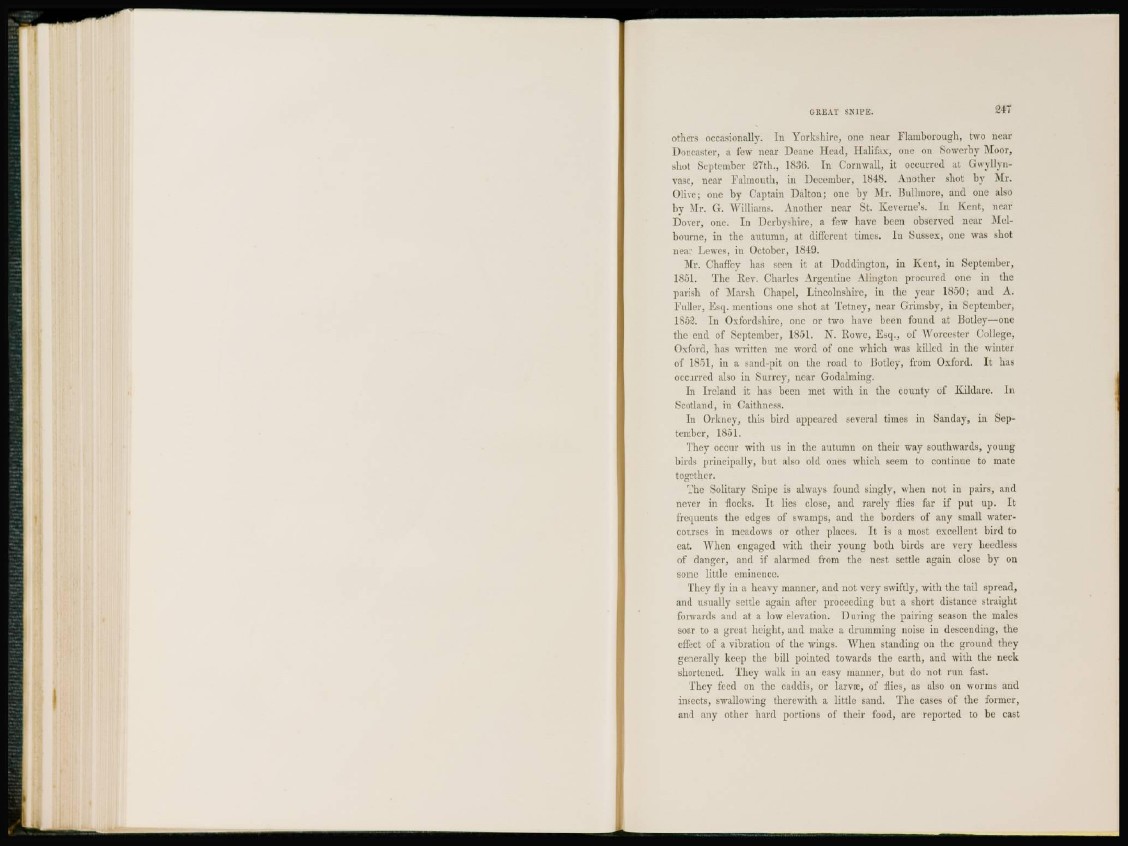
GREAT SNIPE. 247
others occasionally. In Yorkshire, one near Flamborough, two near
Doncaster, a few near Deane Head, Halifax, one on Sowerby Moor,
shot September 27th., 1830. In Cornwall, it occurred at Gwyllynvase,
near Falmouth, in December, 1848. Another shot by Mr.
Olive; one by Captain Dalton; one by Mr. Bullmore, and one also
by Mr. G. Williams. Another near St. Keverne's. In Kent, near
Dover, one. In Derbyshire, a few have been observed near Melbourne,
in the autumn, at different times. In Sussex, ouc was shot
near Lewes, in October, 1849.
Mr. Chaffcy has seen it at Doddington, in Kent, in September,
1851. The Rev. Charles Argentine Alington procured one in the
parish of Marsh Chapel, Lincolnshire, in the year 1850; and A.
Fuller, Esq. mentions one shot at Tetney, near Grimsby, in September,
1852. In Oxfordshire, one or two have been found at Botley—one
the end of September, 1851. N. Rowe, Esq., of Worcester College,
Oxford, has written me word of one which was killed in the winter
of 1851, in a sand-pit on the road to Botley, from Oxford. It has
occurred also in Surrey, near Godalming.
I n Ireland it has been met with in the county of Kildare. In
Scotland, in Caithness.
I n Orkney, this bird appeared several times in Sanday, in September,
1851.
They occur with us in the autumn on their way southwards, young
birds principally, but also old ones which seem to continue to mate
together.
The Solitary Snipe is always found singly, when not in pairs, and
never in flocks. It lies close, and rarely flies far if put up. It
frequents the edges of swamps, and the borders of any small watercourses
in meadows or other places. It is a most excellent bird to
eat. When engaged with their young both birds are very heedless
of danger, and if alarmed from the nest settle again close by on
some little eminence.
They fly in a heavy manner, and not very swiftly, with the tail spread,
and usually settle again after proceeding but a short distance straight
forwards and at a low elevation. During the pairing season the males
soar to a great height, and make a drumming noise in descending, the
effect of a vibration of the wings. "When standing on the ground they
generally keep the bill pointed towards the earth, and with the neck
shortened. They walk in an easy manner, but do not run fast.
They feed on the caddis, or larva?, of flics, as also on worms and
insects, swallowing therewith a little sand. The cases of the former,
and any other hard portions of their food, are reported to be cast